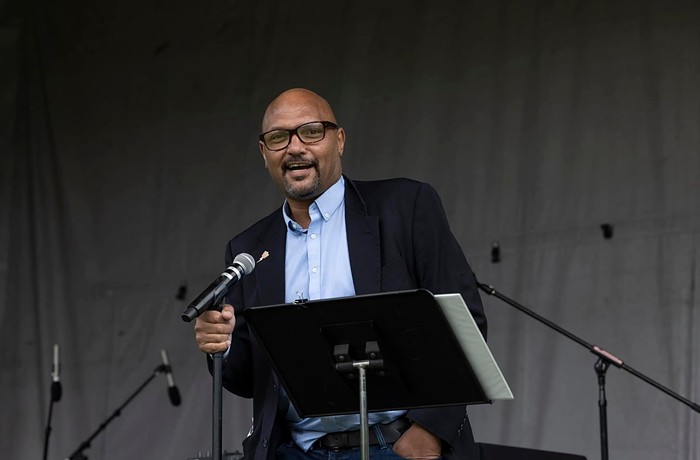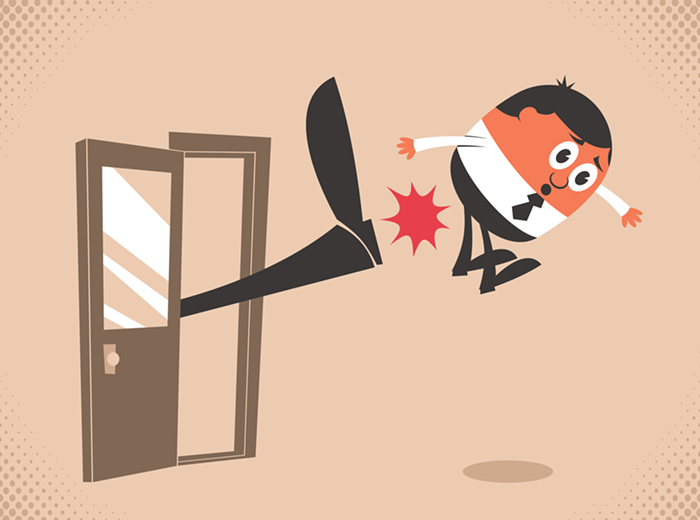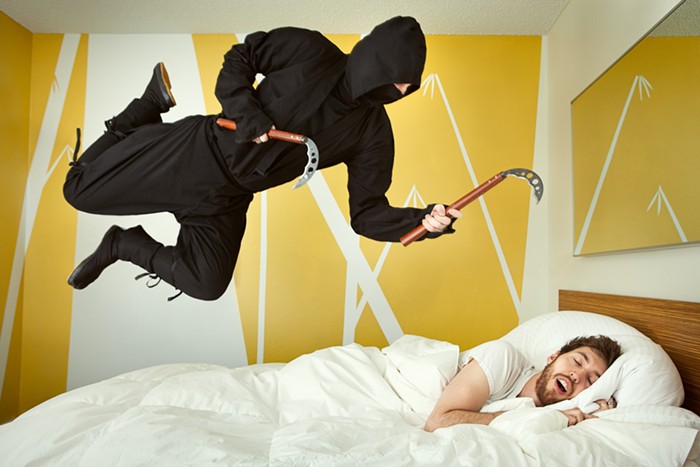When the Portland Art Center (PAC) held its "official" opening last First Thursday, June 1, it heralded the beginning of what could be a significant catalyst for Portland's art scene. Although PAC has occupied the 10,000-square-foot space in Old Town for months now, the event celebrated the use of the newly renovated space as a long-term home to the young organization. And according to Executive Director Gavin Shettler, location is key to the PAC's vitality.
"My goal is for the space to function like a visitor's center for the contemporary arts. For that to happen, it had to be downtown," said Shettler, who moved the nonprofit arts organization from an itinerant space on SE Belmont last December.
What charges the Center with a sense of possibility is its size and, consequently, its sheer capacity for displaying art. Split between two levels, it includes large galleries on the first and second floors in addition to a small room dedicated exclusively to video and sound installations. While work in the main gallery will be chosen by PAC's curatorial committee, the upstairs gallery represents a unique opportunity for emerging artists to lease exhibition space. Not only will this model help generate income for PAC, but it will help attract the kind of diverse and challenging work Shettler hopes will be characteristic of the space. Describing the Center's niche as falling somewhere between a museum and a commercial gallery, he plans for PAC's programming to pick up the slack where other venues fall short.
"As a visual-arts space, the first thing we ask ourselves is, 'Does this have a home somewhere else in the city?'" Shettler explained. "If it doesn't, then we feel a responsibility to the community to show it."
Shettler's sentiment is precisely the type of vision required to make an alternative art space successful, but, somehow, PAC's first group of shows in its new home came off as more than a little anemic.
The gallery's main space houses a meager sampling of Portland's galleries, which coincides with the release of the Center's first annual citywide gallery guide. Including a comprehensive list of 187 spaces along with walking maps, the gallery guide will be an essential tool for navigating Portland's shifting art landscape. And frankly, it's amazing that such a guide doesn't already exist. Featuring two galleries from each of the city's six art districts, the show certainly showcases some representative selections. Carson Ellis' "Fruit Stand," for example, is indicative of Motel's edgy, illustrative aesthetic and James Lavadour's lovely "Hunter" captures PDX's tendency to display vibrant and colorful abstractions. But the Center's first Gallery Guide exhibition fails to capture the breadth and richness of a scene that boasts so many places to see art.
"Commutatus," a sound and sculpture installation by Portlander Barry Johnson, is located in the center of the main gallery and housed in a makeshift wooden cube. Draftsman-like wall drawings interface with mounted particle-board discs; these shapes extend into the gallery space as geometric wooden sculptures. Johnson's enormous curving structures create a satisfying sense of dynamism, but are ultimately too cool and detached to leave much of an impression. And his coupling of the work with an uninspired sound collage that includes lapping waves, meandering horns, and other disparate sounds undermines the solemn austerity his forms could possess on their own.
Unfortunately, the rest of the work doesn't fare much better. The brightly hued and rust-worn metal panels in Jeff Fontaine's "Entropy and the Arrow of Time" present a shallow meditation on the nature of decay. Hexasion II, a selection of video art presented by Jason Frank and Andy Brown, reminds one that blurred footage of tree branches, jarring zooms, and an electronic music score do not great art make. Eight, in the Center's leased gallery space, is more palatable, but, as a post-baccalaureate exhibition of eight Oregon College of Art and Craft students, it is also appropriately amateurish. Subdued abstract paintings by Marilyn Joyce and Tony Raynor are notable, as is a quirky head-scratcher by Jennifer June Kyle called "To Vomit a Rabbit." In Kyle's piece, 100 wall-mounted rosebud-shaped orifices spew curling ribbons of text, each of which poeticizes the sensation of—you guessed it—vomiting a rabbit.
Judging by its first "official" show in its new location, there's a sizable disconnect between the quality of the Portland Art Center's programming and its impressive new home. We'll have to wait and see, though, whether the new Center becomes a focal point of Portland's art scene—or just wasted space.












